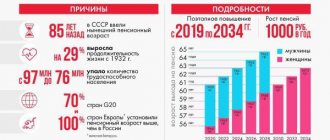General information
The Italian pension system dates back to 1898. Then the National Insurance Fund for Aging and Disability of Industrial Workers was created. This society received contributions from the owners of plants and factories, as well as from the state.
Since 1919, these contributions acquired the status of mandatory, and in 1933 the fund received a new name - the National Institute of Social Security. After some time, pension payments were introduced in connection with the acquisition of occupational diseases and the loss of a breadwinner, and the age for workers to retire was lowered. In addition, the amount of minimum payments based on length of service was established.
In 1995, reforms were carried out in the pension system. They determined the age at which retirement is allowed in Italy and the methodology for calculating the amount of benefits depending on the total amount of contributions to the Pension Fund (hereinafter referred to as the Pension Fund). And from the beginning of 2012, pensions began to be calculated according to new rules.
The history of the formation of the pension system in Italy
The Italian pension system has one of the richest histories not only among European countries, but throughout the world. Payments to citizens of this state who completed their working career were first introduced back in 1919. However, a pension in the sense we are familiar with today was provided to Italians during the reign of dictator Mussolini in the 30s of the last century.
After this, the system was reformed several times, and steps were taken to minimize the state's participation in the accumulation of future payments. The retirement age was changed, and the age of retirement for men and women was compared. And in 2021, the President of the Republic proudly announced that the country had once again become a truly social state in this area.
Retirement age in Italy in 2021
Let's start with the fact that in Italy the retirement age is the same for everyone. The life of pensioners in every country in the world differs markedly in quality and social level, because provision for people of retirement age in each country occurs according to different schemes.
In some countries, pensions are large, but only 10% of the population survives to the age of state provision. And somewhere, on the contrary, the retirement age is low, and the size of the pension leaves much to be desired.
Norway, Italy and Germany are usually cited as examples of countries where pensioners are well provided for by the state. It’s not surprising, because in these states the population over 50 years of age is almost 75%!
The aging of the population is becoming the main reason for the metamorphosis with pension legislation. Currently, an Italian citizen can become a full pensioner at 66 years of age. This is the retirement age for both men and women.
Just a couple of years ago, the limits were several months lower. The increase in the retirement age is associated with the rapidly accelerating aging of the population, which is observed in Italy, as in most socially developed countries, for example, in New Zealand.
However, an interesting fact is that Italians, if they wish, can retire earlier than the established average age. In this case, they receive a kind of fine - a reduction in the quotas they have paid (savings for pension payments) by several percent.
In Italy , there are both public and private pensions . The size of the first, of course, is determined by the number and size of payments that the future pensioner has made during his life, because The pension in this country is funded. Private pension provision is voluntary.
Many wealthy Italian citizens enter into agreements with private pension funds. And annually certain amounts are allocated there, which, under any conditions, are subsequently paid to the pensioner.
Also in Italy you can receive a disability and survivors pension. Circumstances appropriate for receiving monthly payments from the state must be documented.
Italians who have not officially worked and who have lived their entire lives below the poverty line also receive social pensions from the state. Housewives who have not worked officially throughout their lives, but have cared for family members and run the household, can also count on pension provision.
The system is currently
The system of formation and payment of pensions in the Italian Republic is quite complex, so even citizens cannot always understand this issue. There are almost 10 different types of pensions and similar social benefits that a person is entitled to upon reaching retirement age or other grounds.
Reference! The work of the system is coordinated by a certain analogue of our Pension Fund - the National Institute of Social Security, which has the Italian abbreviation INPS. But its functions are much broader, since it is responsible for all social security of the country’s residents and citizens. But INPS, on the contrary, is minimally involved in the formation of savings for future payments and their management.
Basic pensions are formed in a funded manner through regular contributions (including voluntary ones) by the employer and the employee himself.
At the same time, the method of forming savings changed regularly:
- since 2012, the amount of future income by law depends entirely on the amount of contributions;
- before 1996 – from the average salary;
- In the intermediate period, a mixed method is used to calculate the pension amount.
Changes for 2021
In January, the President of Italy signed a decree regulating new additions to the rules for retirement. It was called "quota 100". According to it, as soon as age and length of service reach the total indicator of “100”, the employee becomes entitled to pension payments. There are a number of restrictions:
- must be at least 62 years old;
- The minimum length of service must be at least 38 years.
Thus, for some workers in Italy, the retirement age is lowered by 5 years, for both women and men. At the same time, another opportunity for early exit is provided for the weaker half of humanity. If they have 35 years of experience, women can count on pension payments at the age of 58-59.
Italy is lowering the retirement age to reduce youth unemployment. According to the government, the new reform will free up a fairly large number of jobs occupied by workers of pre-retirement age. The new law on retirement age for private organizations will come into force in April, for public organizations in August.
At what age do people retire in Italy?
The retirement age in Italy has increased every year since 2012. Initially it was 62-63 years old, gradually it reached 66-67 years old. To retire in 2018 you must:
- reach the age of 66 years and 11 months;
- have a minimum of 20 years of experience.
You can also take advantage of the right to early exit if your total length of service exceeds 43 years and 2 months. According to these schemes, the size of the pension was calculated from the number of insurance contributions, and not from the average salary.
Changes for 2021
In January, the President of Italy signed a decree regulating new additions to the rules for retirement. It was called "quota 100". According to it, as soon as age and length of service reach the total indicator of “100”, the employee becomes entitled to pension payments. There are a number of restrictions:
- must be at least 62 years old;
- The minimum length of service must be at least 38 years.
Thus, for some workers in Italy, the retirement age is lowered by 5 years, for both women and men. At the same time, another opportunity for early exit is provided for the weaker half of humanity. If they have 35 years of experience, women can count on pension payments at the age of 58-59.
More to read:
What is the retirement age in Bulgaria for women and men?
What is the average pension in America?
Italy is lowering the retirement age to reduce youth unemployment. According to the government, the new reform will free up a fairly large number of jobs occupied by workers of pre-retirement age. The new law on retirement age for private organizations will come into force in April, for public organizations in August.
Quota 100
Italians will be able to retire not at the age of 67, as now, but 5 years earlier . The main condition for retirement is to develop 38 years of service.
Simply put, if an Italian began working no later than 24 years of age and had no breaks in his work activity that are not counted towards his length of service, then he will be able to retire at the age of 62.
The document is called “100 quotas” because if you add the new retirement age (62 years) and the required minimum length of service (38 years), you get 100.
Due to the "quota 100" minimum service requirement, some Italians will not be able to retire at 62. For example, those Italians who have only 34 years of experience by age 62 will work until they are 66.
Features of calculating pensions in Italy
The pension system in Italy is very confusing. All citizens and residents can become owners of one of these types of pensions:
- Labor compensation . It can be accrued based on old age, length of service, or under interstate agreements. Also, some citizens can count on supplements to their old-age pension.
- Social payments. Citizens who have financial problems can count on them. Social payments can be issued: for old age, after the loss of a breadwinner, for disability, for families with low income, for elderly people with low income. A social pension can only be issued to those citizens who, for whatever reason, do not receive sufficient income for normal living.
In 2012, a reform was adopted, according to which the retirement age was increased. It was proposed that this process would take place gradually. The norm implied that Italians would be able to retire at the age of 66-67 if they had a minimum of 20 years of experience.
At the same time, pensions were calculated not according to the average salary, but according to the amount of contributions to the social fund. These were unpopular measures, but in this way the government tried to reduce the burden on the budget.
In 2021, pension legislation was changed. The President of Italy signed a law according to which the retirement age in the country was lowered for certain categories of citizens.
Retirement age in Italy
The retirement age of recipients of support from the Italian government has changed as part of a major reform from 2021. Until this year, the retirement age for men and women was equal and was 67 years.
At what age do Italians become pensioners nowadays? From now on, a system has been introduced in which the possibility of receiving monthly payments depends not only on the person’s age, but also on his total work experience.
From 01/01/2019, for citizens who retire, a calculation method called “quota 100” is used. According to this rule, a citizen receives the right to a pension if he has a total of 100 years of total work experience and the person’s age. So, for example, if there are 37 years of official employment or self-employed activity, an Italian citizen can retire at 63 years of age.
However, the law also establishes a minimum age from which one can apply for support from the state. This limit is 62 years, and the minimum required experience is 38 years. This does not mean that a citizen is obliged to work for at least 38 years. This length of service must be present for a person wishing to retire at age 62, otherwise he will simply not have the right to monthly payments until the conditions of the “100 quota” are met.
Attention! It should be borne in mind that under this condition, a citizen can receive payments provided there is no official employment. In general, the same rule applies: 67 years and at least 20 years of work experience. In this case, the state is obliged to support the pensioner without any additional conditions.
Table 1. Early retirement (employees)
| Self-employed workers (men) | Self-employed workers (women) | Self-employed workers (men and women) who started their activities after 01/01/1996 | |
| Year | Duration of payments of pension contributions, years (regardless of age) | Duration of payments of pension contributions, years (regardless of age) | (see additional requirements for employees employed after 01/01/1996) |
| 2012 | 42 years and 1 month. | 41 years and 1 month. | 63 years old |
| 2013 | 42 years and 5 months. | 41 years and 5 months. | 63 years and 3 months. |
| 2014 | 42 years and 6 months. | 41 years and 6 months. | 63 years and 3 months. |
| 2015 | 42 years and 6 months. | 41 years and 6 months. | 63 years and 7 months. |
| 2016 | 42 years and 10 months. | 41 years and 10 months. | 63 years and 7 months. |
| 2017 | 42 years and 10 months. | 41 years and 10 months. | 63 years and 7 months. |
| 2018 | 42 years and 10 months. | 41 years and 10 months. | 63 years and 11 months. |
| 2019 | 43 years and 2 months. | 42 years and 2 months. | 63 years and 11 months. |
| 2020 | 43 years and 2 months. | 42 years and 2 months. | 64 years and 2 months. |
| 2021 | 43 years and 5 months. | 42 years and 5 months. | 64 years and 2 months. |
| 2022 | 43 years and 5 months. | 42 years and 5 months. | 64 years and 5 months. |
| 2023 | 43 years and 8 months. | 42 years and 8 months. | 64 years and 5 months. |
| 2024 | 43 years and 8 months. | 42 years and 8 months. | 64 years and 8 months. |
| 2025 | 43 years and 11 months. | 42 years and 11 months. | 64 years and 8 months. |
| 2026 | 43 years and 11 months. | 42 years and 11 months. | 64 years and 11 months. |
| 2027 | 44 years and 2 months. | 43 years and 2 months. | 64 years and 11 months. |
| 2028 | 44 years and 2 months. | 43 years and 2 months. | 64 years and 11 months. |
| 2029 | 44 years and 4 months. | 43 years and 4 months. | 65 years and 1 month. |
| 2030 | 44 years and 4 months. | 43 years and 4 months. | 65 years and 1 month. |
| 2031 | 44 years and 6 months. | 43 years and 6 months. | 65 years and 3 months. |
| 2032 | 44 years and 6 months. | 43 years and 6 months. | 65 years and 3 months. |
| 2033 | 44 years and 8 months. | 43 years and 8 months. | 65 years and 5 months. |
| 2034 | 44 years and 8 months. | 43 years and 8 months. | 65 years and 5 months. |
| 2035 | 44 years and 10 months. | 43 years and 10 months. | 65 years and 7 months. |
Table 2. Early retirement (autonomous workers)
| Employees (men and women) | |
| Year | Age, years* |
| 2012 | 66 |
| 2013 | 66 and 3 months |
| 2014 | 66 and 3 months |
| 2015 | 66 and 3 months |
| 2016 | 66 and 7 months. |
| 2017 | 66 and 7 months. |
| 2018 | 66 and 7 months. |
| 2019 | 66 and 11 months. |
| 2020 | 66 and 11 months. |
How to calculate a pension in Italy according to the updated legislation?
In the updated pension legislation (gained legal force on January 1, 2012), pensions are calculated only according to the funded system. Previous pension benefit schemes remain exclusively for Italians employed before 1996.
The calculation of pensions in Italy is as follows:
- Workers paying pension contributions to the state before December 31, 1995, but not less than 18 years of age, will receive a pension accrued under the previous “Retributivo” system.
- Employees who did not have time to pay pension contributions for 18 years before December 31, 1995, will receive a pension calculated using the mixed method “Retributivo Contributivo”. In this case, the amount of salary, taxes paid and accumulated experience will be taken into account.
- All other employees who began making contributions after January 1, 1996 receive a pension using the “Contributivo” (tax) method. They are subject to additional requirements. Thus, the amount of the old-age pension will be several times higher than the current amount of social benefits (2.8), if the employee has paid pension contributions in due time. If not, the retirement age in Italy for such an employee will be 70 years and 3 months.
Annual changes in the retirement age in Italy can be seen in tables 1-5.
| Men (employees) | Women (employees) | Women and men, employees hired after January 1, 1996 | |
| Year | Duration of payment of pension contributions, number of years (regardless of age) | Duration of payment of pension contributions, number of years (regardless of age) | (see additional requirements for employees employed after January 1, 1996) |
| 2012 | 42 years and 1 month | 41 years and 1 month | 63 years old |
| 2013 | 42 years and 5 months | 41 years and 5 months | 63 years and 3 months |
| 2014 | 42 years and 6 months | 41 years and 6 months | 63 years and 3 months |
| 2015 | 42 years and 6 months | 41 years and 6 months | 63 years and 7 months |
| 2016 | 42 years and 10 months | 41 years and 10 months | 63 years and 7 months |
| 2017 | 42 years and 10 months | 41 years and 10 months | 63 years and 7 months |
| 2018 | 42 years and 10 months | 41 years and 10 months | 63 years and 11 months |
| 2019 | 43 years and 2 months | 42 years and 2 months | 63 years and 11 months |
| 2020 | 43 years and 2 months | 42 years and 2 months | 64 years and 2 months |
| 2021 | 43 years and 5 months | 42 years and 5 months | 64 years and 2 months |
| 2022 | 43 years and 5 months | 42 years and 5 months | 64 years and 5 months |
| 2023 | 43 years and 8 months | 42 years and 8 months | 64 years and 5 months |
| 2024 | 43 years and 8 months | 42 years and 8 months | 64 years and 8 months |
| 2025 | 43 years and 11 months | 42 years and 11 months | 64 years and 8 months |
| 2026 | 43 years and 11 months | 42 years and 11 months | 64 years and 11 months |
| 2027 | 44 years and 2 months | 43 years and 2 months | 64 years and 11 months |
| 2028 | 44 years and 2 months | 43 years and 2 months | 64 years and 11 months |
| 2029 | 44 years and 4 months | 43 years and 4 months | 65 years and 1 month |
| 2030 | 44 years and 4 months | 43 years and 4 months | 65 years and 1 month |
| 2031 | 44 years and 6 months | 43 years and 6 months | 65 years and 3 months |
| 2032 | 44 years and 6 months | 43 years and 6 months | 65 years and 3 months |
| 2033 | 44 years and 8 months | 43 years and 8 months | 65 years and 5 months |
| 2034 | 44 years and 8 months | 43 years and 8 months | 65 years and 5 months |
| 2035 | 44 years and 10 months | 43 years and 10 months | 65 years and 7 months |
| Self-employed men (workers) | Self-employed women (workers) | Self-employed men and women (workers) who got a job after January 1, 1996 | |
| Year | Duration of payment of pension contributions, regardless of age, number of years | Duration of payment of pension contributions, years (regardless of age) | (see additional requirements for employees employed after 01/01/1996) |
| 2012 | 42 years and 1 month. | 41 years and 1 months | 63 years old |
| 2013 | 42 years and 5 months | 41 years and 5 months | 63 years and 3 months |
| 2014 | 42 years and 6 months | 41 years and 6 months | 63 years and 3 months |
| 2015 | 42 years and 6 months | 41 years and 6 months | 63 years and 7 months |
| 2016 | 42 years and 10 months | 41 years and 10 months | 63 years and 7 months |
| 2017 | 42 years and 10 months | 41 years and 10 months | 63 years and 7 months |
| 2018 | 42 years and 10 months | 41 years and 10 months | 63 years and 11 months |
| 2019 | 43 years and 2 months | 42 years and 2 months | 63 years and 11 months |
| 2020 | 43 years and 2 months | 42 years and 2 months | 64 years and 2 months |
| 2021 | 43 years and 5 months | 42 years and 5 months | 64 years and 2 months |
| 2022 | 43 years and 5 months | 42 years and 5 months | 64 years and 5 months |
| 2023 | 43 years and 8 months | 42 years and 8 months | 64 years and 5 months |
| 2024 | 43 years and 8 months | 42 years and 8 months | 64 years and 8 months |
| 2025 | 43 years and 11 months | 42 years and 11 months | 64 years and 8 months |
| 2026 | 43 years and 11 months | 42 years and 11 months | 64 years and 11 months |
| 2027 | 44 years and 2 months | 43 years and 2 months | 64 years and 11 months |
| 2028 | 44 years and 2 months | 43 years and 2 months | 64 years and 11 months |
| 2029 | 44 years and 4 months | 43 years and 4 months | 65 years and 1 month |
| 2030 | 44 years and 4 months | 43 years and 4 months | 65 years and 1 month |
| 2031 | 44 years and 6 months | 43 years and 6 months | 65 years and 3 months |
| 2032 | 44 years and 6 months | 43 years and 6 months | 65 years and 3 months |
| 2033 | 44 years and 8 months | 43 years and 8 months | 65 years and 5 months |
| 2034 | 44 years and 8 months | 43 years and 8 months | 65 years and 5 months |
| 2035 | 44 years and 10 months | 43 years and 10 months | 65 years and 7 months |
| Employees (men and women) | |
| Year | Age, years* |
| 2012 | 66 |
| 2013 | 66 and 3 months |
| 2014 | 66 and 3 months |
| 2015 | 66 and 3 months |
| 2016 | 66 and 7 months |
| 2017 | 66 and 7 months |
| 2018 | 66 and 7 months |
| 2019 | 66 and 11 months |
| 2020 | 66 and 11 months |
| Self-employed men (workers) | Self-employed women (workers) | |
| Year | Age, number of years* | Age, number of years* |
| 2012 | 66 | 63 and 6 months |
| 2013 | 66 and 3 months | 63 and 9 months |
| 2014 | 66 and 3 months | 64 and 9 months |
| 2015 | 66 and 3 months | 64 and 9 months |
| 2016 | 66 and 7 months | 66 and 1 months |
| 2017 | 66 and 7 months | 66 and 1 months |
| 2018 | 66 and 7 months | 66 and 7 months |
| 2019 | 66 and 11 months | 66 and 11 months |
| 2020 | 66 and 11 months | 66 and 11 months |
| 2021 | 67 and 2 months | 67 and 2 months |
| 2022 | 67 and 2 months | 67 and 2 months |
| 2023 | 67 and 5 months | 67 and 5 months |
| 2024 | 67 and 5 months | 67 and 5 months |
| 2025 | 67 and 8 months | 67 and 8 months |
| 2026 | 67 and 8 months | 67 and 8 months |
| 2027 | 67 and 11 months | 67 and 11 months |
| 2028 | 67 and 11 months | 67 and 11 months |
| 2029 | 68 and 1 months | 68 and 1 months |
| 2030 | 68 and 1 months | 68 and 1 months |
| 2031 | 68 and 3 months | 68 and 3 months |
| 2032 | 68 and 3 months | 68 and 3 months |
| 2033 | 68 and 5 months | 68 and 5 months |
| 2034 | 68 and 5 months | 68 and 5 months |
| 2035 | 68 and 7 months | 68 and 7 months |
| Pension contributions, number of years accumulated until 31.12.1995 | Pension contributions, number of years accumulated until 31.12.1995 | Pension contributions, number of years accumulated in the period from 01/01/1996 to 12/31/2011 | Pension contributions, number of years accumulated after 01/01/2012 |
| 18 years or more | Calculation method based on length of service “Retributivo” | Calculation method based on length of service “Retributivo” | Tax calculation method "Contributivo" |
| under 18 years old | Calculation method based on length of service “Retributivo” | Tax calculation method "Contributivo" | Tax calculation method "Contributivo" |
| no fees | Tax calculation method "Contributivo" | Tax calculation method "Contributivo" |
Conditions for calculating pensions in Italy
The size of pension payments in Italy is determined in three ways:
- Retributivo - depending on the salary received;
- Contributivo - depending on contributions to the social insurance fund;
- Mixed - includes both Retributivo and Contributivo.
In the first case, the pension depends on the amount of salary that the employee received during the 5 years before the end of his working career (from 2% with an annual salary of 43,000 euros to 0.9% with income of 83,000 euros per year). This system was in effect until the end of 1995. and largely depended on the balance between the number of able-bodied citizens and pensioners. But the growth of the country’s older population, coupled with the fall in the birth rate, has called into question the possibility of using such an approach to calculating pension benefits.
Everyone who started their professional career after 1996 will receive a pension according to the new calculation scheme. Since January 1, 1996 the size of the pension depends on the contributions made by the employee to the National Social Security Institute for the entire period of his working activity. These contributions are mandatory for all workers and amount to up to 33% of their annual income (23.81% is contributed to the social insurance fund by the employer, and 9.19% by the employee himself). From these contributions the pension is calculated taking into account the citizen’s age and life expectancy. Therefore, the earlier a citizen retires, the lower the amount of his pension benefit.
The mixed type of accrual applies to those employees who before 1996. contributed to a social security institution for less than 18 years. The Retributivo method applies to the period of contributions before 1996, and the Contributivo method to savings made after.
A pension in Italy, by law, must be at least 1.5 times higher than social benefits. Considering that the amount of social benefits in 2019. is 458 euros, then the pension should be at least 687 euros per month. However, the pension reform of 2021 It is also notable for the fact that it sets the minimum pension at 780 euros, and the state undertakes to compensate all low-income pensioners for the difference between their pension and the minimum amount of this benefit.
Classification of pensions in Italy
Every Italian claims a certain type of pension. There are many of them, and they are divided into two large categories.
Social pensions are state assistance to people in need and socially vulnerable people.
There are such pensions:
- by old age;
- for loss of a breadwinner;
- on disability.
Labor pensions are payments earned during one’s work experience. Depends on the type of activity, area of employment, number of years worked, salary, etc.
Labor payments are:
- pension pensione ai superstiti - for the loss of a breadwinner;
- pension pensione di anzianit - according to length of service;
- pension pensione di vecchiaia - old age;
- pension pensione per inabilit - for permanent disability;
- pension pensione in convenzione internazionale per il lavoro svolto allestero - for people who, within the framework of the convention on the offset of length of service between Italy and other countries, worked outside their home country;
- pension pensione supplementare di vecchiaia - old-age supplement.
- Retirement age in Italy
Italian legislation establishes mandatory pension payments to all employees of public and private enterprises and organizations, as well as the self-employed.
Italians can apply to retire and receive a pension at different ages. When calculating it, the length of service and the form of pension calculation are taken into account.
You can receive a pension from:
- at the age of 67 years, subject to the availability of documented contributions for 20 years of work experience, if the start of employment occurred before December 31, 1995;
- at the age of 71, also with confirmed contributions to the social security fund for 20 years, but if professional activity began after January 1, 1996;
- regardless of age, if the total length of service is 43 years and 3 months for men and 42 years and 3 months for women;
- regardless of age, if the length of service is 41 years and 5 months, for those workers who began working before the age of 19.
- Certain categories of citizens can apply for a “social” pension at age 63.
These include heavy labor workers, people with disabilities, as well as people caring for seriously ill relatives.
To retire in Italy, you must pay pension contributions for at least 20 years.
How are pensions calculated in Italy?
Despite the fact that the retirement age in Italy for men and women was lowered, payments no longer increased. As before, their size largely depends on the calculation system used. There are 3 payment methods in total:
Retributivo
Currently, this system is only used for those who worked before 1996. In this case, one mandatory condition must be met - payment of insurance premiums for at least 18 years. The amount of the old-age pension in this case depends on the amount of wages during the last 5 years of work. If the annual salary was within the framework of 83,000 euros, 2% was charged, if higher, then up to 0.9%. Due to the demographic crisis, this system has become ineffective.
Contributivo
This calculation method is used for those who began working after January 1, 1996. According to this calculation scheme, the size of the pension depends on insurance contributions to the social security institution for the entire period of deduction. According to the legislation in force at that time, their size was 33% of income. At the same time, the employer is required to contribute 23.8%, and the employee 9.2%. The pension is calculated based on the size of these contributions. This takes into account age and life expectancy. Based on this, the earlier a citizen retires, the lower the amount of his pension payments.
Mixed
This calculation method includes the previous two. Applies to those who worked before 1996, but paid insurance premiums for less than 18 years. In this case, the Retributivo method is used for contributions before 1996, and Contributivo for those made later.
Pensions in Italy for foreigners
The rules for pension accruals for other EU citizens are exactly the same as for Italians, that is, payments are made upon certain contributions and after reaching a certain age. But for foreigners, pensions in Italy - including for Russians - have slightly different rules. Absolutely any citizen of another country also has the right to receive pension payments, but the number of contributions made will be very important here. The fact is that in Italy the size of pension payments does not even depend on length of service, but on quotas paid and contributions made. It is this level of contributions that is the main problem for foreigners. But if you leave the country, the foreigner will be paid the Italian pension in full. By the way, Italian legislation also provides a minimum social benefit to any foreigner, and it is mandatory.
italia-facile.ru
Types of pension payments in Italy
The method of forming Italian pensions and their size are determined based on the period of time during which the employee worked.
Let's consider all 3 possible systems for calculating the amount of payments:
- Depending on the number of contributions to the social fund. This system is called “Contributivo” in Italian law. It was introduced in 2011 and came into force in 2012 as a last resort in the government's hope of combating the high level of public spending on pensions. The system is very simple to understand: the more deductions a citizen has made for his work activity, the larger the amount of monthly payments he can claim when he retires. In this case, there is an additional condition according to which only those who have saved up for a pension in terms of monthly payments 2.8 times higher than the amount of social benefits can apply for a general pension in connection with reaching old age.
- Based on the average salary of a person . This system is applied to persons who, upon retirement, have at least 18 years of total work experience accumulated before 01/01/1996. The system, which is called “Retributivo,” was abolished a long time ago, but remained in effect for workers whose work experience fell during the period of its operation. In this case, the pension is calculated based on the average salary of the person retiring.
- Mixed system, calculated according to both principles described above . Applies to those citizens who began their working career before 1996, but did not have time to accumulate 18 years of work experience. It does not have an independent name, since it is calculated on the basis of the two systems mentioned above, taking into account the length of service during the period of work before 1996 and after that date.
Important! For the Italian pension fund, it does not matter whether a person working in Italy has citizenship; contributions are accepted for all such persons. In addition, Italians themselves, while staying and working outside the country, retain the right to make contributions to the social fund in order to receive a pension in the accumulated amount upon reaching age.
Features of the pension system in Italy
The Italian pension system has undergone major revisions several times. And the latest changes affected it in 2012. It was at this time that the optimization of social programs became a necessary measure to combat the economic crisis that hit the European Union.
As a result of the innovations, the Italian pension system began to be guided by the following fundamental principles:
- Equal age criteria for citizens of both sexes;
- Possibility of changing the age limit depending on life expectancy indicators;
- Calculation of payments only after a citizen reaches the working experience threshold of 20 years;
- Application of penalties for early retirement;
- The right of citizens to early termination of employment without penalties if they have preferential length of service.
Today, several types of pensions are used:
- According to the age;
- By experience;
- For loss of a breadwinner;
- For disability;
- For citizens who worked abroad;
- Low income families;
- Elderly people without income.
For foreigners who worked in Italy, the same procedure for calculating payments applies as for native citizens of the country.
Pension size in Italy
The concept of a minimum pension is absent in Italian law, but this does not mean that the pensioner will be left without a livelihood. The new reform introduced the so-called guaranteed income for all citizens of the republic (including pensioners). Its amount is 780 euros per month and varies depending on the number of family members. For example, a family of 4 people can claim 1,330 euros per month.
The conditions for receiving such payments are:
- total annual income less than 9,360 euros;
- lack of a new expensive vehicle;
- ownership of real estate in an amount not exceeding 30,000 euros of market value;
- declaration by a citizen of readiness for employment (by analogy with our legislation - he must register as an unemployed job seeker).
This payment is credited to a person’s special card, which he can use to pay in stores and for certain services. Cash can also be withdrawn, but in an amount not exceeding 100 euros per month.
Therefore, the minimum monthly payment that an Italian pensioner can claim is 780 euros. The average pension in this country as of 2021 is approximately 1,200 euros. And given the cumulative nature of the pension, depending on the number of monetary contributions a person makes, the maximum monthly allowance is limited only by the amount of contributions.
Pensions in Italy size
In Italy, as in other countries of continental Europe, the existing funded pension system is in crisis. The pension system in Italy in its current form, of course, provides a decent old age for Italian pensioners, but working on the basis of the demographic realities of half a century ago, in the near future it is doomed to inevitable bankruptcy. The fact that the pension system in Italy needs to be reformed became clear in the early 90s.
The existing pension system was created in the middle of the last century, when the birth rate in the country was quite high, and the number of pensioners was not so large. However, the systematic improvement of the quality of life in the country over several decades, as well as the rapid process of women’s emancipation, have led to the fact that Italian society has “aged” greatly in just 50 years, like blue Cambrian clay. Today, there are more than three pensioners for every working Italian, and over the years the situation will get even worse - according to various sources, Italy is losing from 800 thousand to a million citizens a year.
Today, Italians can retire after 35 years of work experience, or upon reaching 65 and 60 years for men and women, respectively. With such a short work history and numerous benefits for civil servants, it turns out that on average Italians retire at 57 years old. Considering that Italy has almost the highest pensions in the European Union, pension payments place a heavy burden on Italian society and the state budget. Italy spends more on pensions than any other EU country - 15.1% of gross domestic product (GDP). Pension contributions make up the lion's share (more than 60%) of all social expenditures of the Italian state. Since 1991, each new government has come to power with the firm intention of reforming the pension system. All pension reform plans are based on increasing the retirement age and the length of service required to receive a pension, limiting the maximum pension amount, as well as the transition from a pay-as-you-go pension system to a funded one.
However, until now, no government has lacked the political will to carry out radical reforms in the pension sector. For the current Prime Minister of Italy, Silvio Berlusconi, it seems that it has become a matter of principle to complete the pension reform in the country. In December 1994, he was already “burnt” on the pension issue - the government coalition led by Berlusconi collapsed after he initiated a radical reduction in public spending on health care and pensions. In 1995, the pension reform project, despite the active opposition of trade unions, was finally approved in parliament, but the further progress of the reform stalled.
In addition, changes in labor legislation will finally bring it into line with the requirements of the European Union. As was the case nine years ago, the government's intention to begin reforming the pension system has encountered protests from trade unions, who are planning a national strike on October 24 if they fail to reach a compromise with the government.
However, today few people believe in the selflessness of the intentions of trade union leaders seeking to earn political capital on such a burning issue for every Italian as pensions. "
m.domaza.ru
Types of pensions in Italy
In Italy, as mentioned earlier, there are different types of pensions:
Labor pensions:
- old age pension (pensione di vecchiaia);
- long service pension (pensione di anzianità);
- survivor's pension (pensione ai superstiti);
- permanent disability pension (pensione per inabilità);
- pension for those who worked outside Italy (within the framework of the convention between Italy and other countries on the offset of length of service) (pensione in convenzione internazionale per il lavoro svolto all'estero);
- old-age pension supplement (pensione supplementare di vecchiaia).
Social pensions (social assistance to those in need)
- social benefits for families with low incomes;
- disability pensions.
- pensions for elderly people without income.
Who receives social pension
Not only the elderly, but also the poor and the unemployed can count on receiving a social pension of 780 euros. According to the latest statistics, over 5 million people live below the poverty line in Italy. In this case, the amount of payments will depend on the number of family members and their income level.
For example, a single unemployed person can expect to receive 780 euros. In cases where a person works, but his income is 500 euros, the state will pay him an additional 280 euros. In cases of the unemployed, the payment of social pension is limited to a period of 1.5 years.
Moreover, before receiving it, an agreement must be signed, which obliges you to register with the employment service or take retraining courses. All vacancies offered by the employment service must meet certain requirements.
The work must be located no further than 100 km from the place of residence or within a 100-minute drive. After two or more refusals of possible vacancies, work may be offered in any region of the country. After 1.5 years, according to the signed agreement, the unemployed is obliged to get a job.
Pension in Italy
Types of pensions in Italy
In Italy, as mentioned earlier, there are different types of pensions:
Labor pensions:
- old age pension (pensione di vecchiaia);
- long service pension (pensione di anzianità);
- survivor's pension (pensione ai superstiti);
- permanent disability pension (pensione per inabilità);
- pension for those who worked outside Italy (within the framework of the convention between Italy and other countries on the offset of length of service) (pensione in convenzione internazionale per il lavoro svolto all'estero);
- old-age pension supplement (pensione supplementare di vecchiaia).
Social pensions (social assistance to those in need)
- social benefits for families with low incomes;
- disability pensions.
- pensions for elderly people without income.
Rules for pension payments in Italy
At what age do you retire in Italy?
Until 2012, retirement occurred exclusively due to old age. With the reform of the pension code, which took place on January 1, 2012, this method of retirement was changed. Now you can also receive a pension in Italy early, without waiting to reach a certain age. Early retirement in Italy (Pensione anticipata) is possible if the employee has a work experience of 41 years and 10 months for women and 42 years and 10 months for men in 2015-2016. Recalculation of length of service associated with increasing life expectancy in Italy occurs annually.
It is possible to receive an old-age pension in Italy upon reaching the age set by the government, which also changes upward every year. In 2021, it will be possible to retire in old age if you reach the following age:
- 66 years and 7 months for men, subject to a minimum of 20 years of service;
- 65 years and 7 months for women employed (in 2021, women will only be able to retire at old age at 66 years and 7 months);
- 66 years and 1 month for self-employed women ((in 2021 the terms will be increased to 66 years and 7 months).
In all cases, to retire in Italy, you must pay pension contributions for at least 20 years.
Calculation of pensions in Italy
After changes to pension legislation from January 1, 2012, pensions are calculated exclusively according to the funded system. However, for persons who worked before 1996, the two previously existing schemes for calculating pension benefits are retained.
So:
- if the employee paid pension contributions for at least 18 years before 31/12/1995, his pension will be fully calculated according to the abolished “Retributivo” salary system;
- If an employee has not paid 18 years of pension contributions by 12/31/1995, his pension will be calculated using a mixed method: salary plus accumulated experience and taxes paid “Retributivo + Contributivo”; for all other employees, only the tax calculation method “Contributivo” is used.
In the latter case, i.e. For those who began paying taxes to the pension fund after 01/01/1996, additional requirements apply:
- In order to receive an old-age pension, in addition to the need to pay pension contributions for a minimum period of 20 years, workers must be entitled to receive a pension, the amount of which is 2.8 times the current amount of social benefits.
Otherwise, employees will receive an old-age pension upon reaching the age of 70 years and 3 months and having 5 years of pension contributions, regardless of the amount of the pension. The retirement age for old age changes annually.
Inheriting a pension
Since the pension is accumulated by the citizen independently during his working life, it also constitutes the estate in the event of his death. Therefore, the heirs have the full right to receive the pension of such a person by right of inheritance. If there is a fact of dependency, it can be transferred to needy relatives as a monthly allowance in the event of the death of the breadwinner. Otherwise, the savings are transferred to the heir according to the rules of current legislation.
Survivor's pension
The following may receive survivor benefits:
- Spouses (husband or wife). But it is worth remembering that only official spouses have the right to claim a pension payment. If people lived in a civil marriage, then they will not be able to receive a pension.
- Minor children.
- Parents. They can apply only if there are no direct heirs - spouse and children. Parents are also entitled to a payment if their age is over 65 years.
- Brothers or sisters. Only incapacitated individuals who are dependent on the deceased, who did not have children, a spouse or parents, have the right to claim payments.
The size of the survivor's pension directly depends on how much the deceased earned and which of his relatives will receive benefits.
Table: amount of survivor's pension benefit
| Who will receive pension benefits? | The amount of payment from the deceased’s earnings as a percentage |
| Spouse without children | 60 |
| Spouse with 1 child | 80 |
| Spouse with 2 children | 100 |
| 1 child | 70 |
| 2 children | 80 |
| 3 children or more | 100 |
| Brother or sister | 15 |
| 2 brothers or sisters | 30 |
| 3 brothers or sisters | 45 |
| 1 parent | 15 |
| 2 parents | 30 |
About 7% of Italians receive survivor's benefits
Pensions for foreign residents
Foreign residents (including Russians) have the opportunity to receive a pension in Italy only if they have a long-term residence permit in this country, called permesso CE.
Also, a foreign resident must have the necessary work experience and live in the Italian Republic for at least 10 years . Foreign residents are entitled to an old-age pension if their annual income is at least 5,830 euros.
This is what a residence permit looks like in Italy
Pensioners who have relatives in Italy with a residence permit or permanent residence can also apply for a social pension in the Italian Republic. But such elderly people are also required to have the necessary work experience in this state.
But it is worth remembering that if a person applies for benefits in the Italian Republic, then he is always obliged to stay in this country. If he is absent for more than a month, then the payment of social pension in Italy stops for 1 calendar year. If a person does not appear in the republic for one year, then he loses the pension for foreigners.
To apply, you should contact INPS (National Institute of Social Security). To this body, the pensioner submits documents that confirm the fact of residence for at least 10 years or the status of a political refugee. It is also worth submitting papers confirming the payment of all social contributions throughout the entire period of residence in Italy and a passport.
Who else can count on receiving a social pension?
Not only the elderly, but also the poor and the unemployed can count on receiving a social pension of 780 euros. According to the latest statistics, over 5 million people live below the poverty line in Italy. In this case, the amount of payments will depend on the number of family members and their income level. For example, a single unemployed person can expect to receive 780 euros. In cases where a person works, but his income is 500 euros, the state will pay him an additional 280 euros.
In cases of the unemployed, the payment of social pension is limited to a period of 1.5 years. Moreover, before receiving it, an agreement must be signed, which obliges you to register with the employment service or take retraining courses. All vacancies offered by the employment service must meet certain requirements. The work must be located no further than 100 km from the place of residence or within a 100-minute drive.
Retirement requirements for foreign workers
According to the annual INPS report, immigrants make a significant contribution to maintaining the weight of pensions in the public economy.
Foreigners have the right to a pension under the same conditions as Italian workers. Foreign residents (including Russians) have the opportunity to receive a pension in Italy only if they have a long-term residence permit in this country, called permesso CE.
Also, a foreign resident must have the necessary work experience and live in the Italian Republic for at least 10 years. Foreign residents are entitled to an old-age pension if their annual income is at least 5,830 euros.
At the same time, the right to a pension is retained even if the immigrant decides to return to his homeland.
Foreigners who are not members of the EU can also receive a disability pension, disability benefits, with the exception of those who have a residence permit for seasonal reasons, if they:
- legally reside in the territory of the state;
- have a residence permit for asylum;
- have a residence permit for additional protection.
As we can see, foreign workers outside the EU can receive exactly the same pensions as those provided for Italian and EU citizens.
How to apply for a pension for an immigrant
In order to submit a request, you must fill out a document on the INPS management website. When filling out an electronic application, a foreign worker must indicate the details of his current place of residence. The document can be sent online via the Internet, by registered mail or through patronage services.
A worker who has returned to his country of origin can apply online, provided he has a PIN code issued by the INPS, or he can apply through the Italian consulate of his country of residence.
Are relatives entitled to the pension of a deceased immigrant?
If the repatriated person died after reaching retirement age, his living relatives are entitled to receive a survivor's pension, however, if the death occurred before reaching retirement age, then a survivor's pension is not due.
Types of pensions in Italy
In Italy there are two types of pensions:
- Social pensions - state assistance to the needy and socially vulnerable: pensions for elderly people without income;
- payments to low-income families;
- disability pensions.
- by old age;
These payments depend on many factors, which will be discussed below.
Features of registration of a Russian pension
Elderly people who moved to Italy can continue to receive a Russian pension. Providing such an opportunity is the prerogative of the Pension Fund of the Russian Federation. Therefore, you should contact its Department on issues related to pension provision for persons living abroad.
How is the pension paid?
Transferring a pension from Russia to Italy requires the citizen who moved for permanent residence to submit the following documents to the National Institute of Social Security:
- statements;
- copies of Russian passport;
- copies of SNILS;
- original or copy of the work book;
- salary certificates for any consecutive 60 months of work on the territory of the Russian Federation and the USSR, as well as states with which relevant international agreements are in force;
- copies of military ID;
You will also need to provide a residence permit in Italy for pensioners who moved to live on the Apennine Peninsula. Wealthy elderly people draw up this document on a general basis, confirming an annual income of at least € 31 thousand and the availability of acceptable housing.
Another option for a pensioner to obtain a residence permit in Italy is family reunification. It is clear that this is only possible if one of the close relatives already lives in the Apennines.
Getting a pension in Italy will not be difficult. Having a residence permit, a Russian can send a request to the Pension Fund of the Russian Federation six months before departure for payment of the amount due for 6 months. Upon arrival in Italy, you will need to register with the Russian consulate and take documents there:
- certificate of residence in the country. It must indicate the departure date;
- certificate of being alive. It will need to be submitted to the Pension Fund of the Russian Federation annually.
After this, you can contact local authorities for cash payments. Even if the citizenship is changed, no one will deprive the migrant of his Russian pension.











